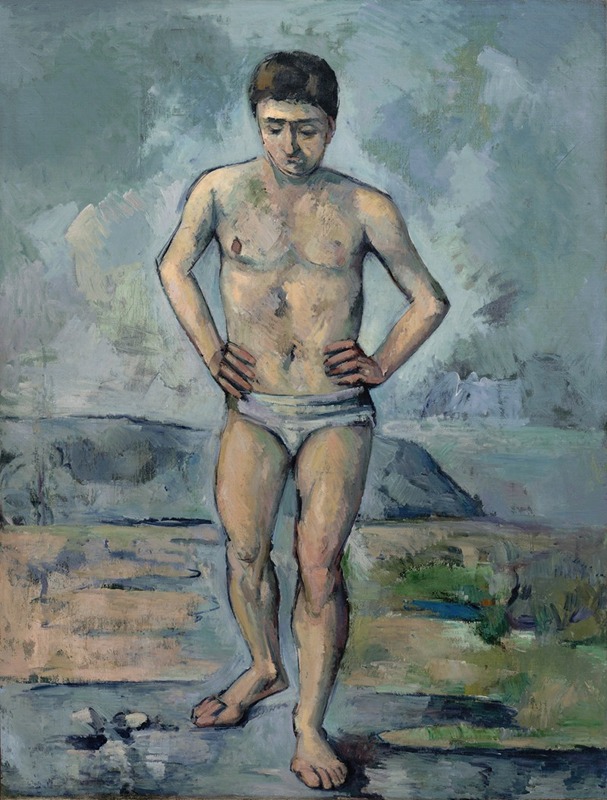
Le Grand Baigneur
A hand-painted replica of Paul Cézanne’s masterpiece Le Grand Baigneur, meticulously crafted by professional artists to capture the true essence of the original. Each piece is created with museum-quality canvas and rare mineral pigments, carefully painted by experienced artists with delicate brushstrokes and rich, layered colors to perfectly recreate the texture of the original artwork. Unlike machine-printed reproductions, this hand-painted version brings the painting to life, infused with the artist’s emotions and skill in every stroke. Whether for personal collection or home decoration, it instantly elevates the artistic atmosphere of any space.
Paul Cézanne's "Le Grand Baigneur," also known as "The Large Bather," is a notable work within the artist's extensive exploration of the theme of bathers, which he revisited throughout his career. Cézanne, a French Post-Impressionist painter, is renowned for his unique approach to form and color, which laid the groundwork for the transition from 19th-century artistic concepts to a new and radically different world of art in the 20th century.
"Le Grand Baigneur" is part of a series of paintings that depict nude figures in natural settings, a subject that fascinated Cézanne and one he returned to repeatedly. This particular painting is characterized by its depiction of a solitary male figure, a departure from some of his other works that feature groups of bathers. The figure is rendered with Cézanne's distinctive brushwork, which emphasizes the solidity and volume of the form, a technique that would later influence the development of Cubism.
Cézanne's bathers are often noted for their sculptural quality, and "Le Grand Baigneur" is no exception. The figure in the painting is portrayed with a sense of monumentality, standing in a pose that suggests both relaxation and tension. The background is typically Cézannesque, with a landscape that is suggested rather than detailed, using a palette of greens and blues that complement the earthy tones of the figure's skin.
The painting reflects Cézanne's interest in the human form and his desire to capture the essence of his subjects through a careful study of shapes and colors. Unlike the Impressionists, who were his contemporaries, Cézanne was less concerned with capturing the fleeting effects of light and more focused on the underlying structure of his compositions. This approach is evident in "Le Grand Baigneur," where the interplay of light and shadow serves to enhance the three-dimensionality of the figure.
Cézanne's work on bathers, including "Le Grand Baigneur," was not widely appreciated during his lifetime. However, his innovative techniques and his commitment to exploring new ways of seeing the world eventually earned him recognition as a pivotal figure in the history of modern art. His influence can be seen in the works of later artists such as Pablo Picasso and Henri Matisse, who admired Cézanne's ability to convey depth and form through color and brushstroke.
Today, "Le Grand Baigneur" is celebrated as an example of Cézanne's mastery of form and his contribution to the evolution of modern art. The painting is housed in various collections, with different versions and studies of bathers by Cézanne found in major museums around the world. These works continue to be studied and admired for their groundbreaking approach to composition and their profound impact on the trajectory of 20th-century art.

















